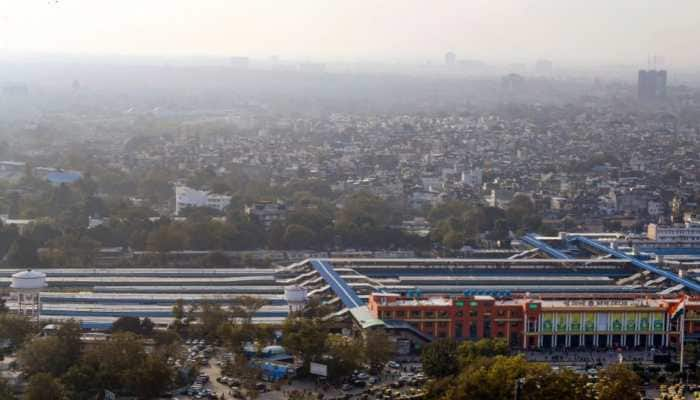The Story Of India's First Fighter Pilot, Who Wrote 'India' On The Plane, Fought For The British
Do you know who was India's first fighter pilot? What was the role of the cricket field in this? His name was Hardit Singh Malik. He had fought for the British in the World War I but had 'India' written in big letters on his plane. Read the full story.
Trending Photos
) Hardit Singh Malik
Hardit Singh Malik New Delhi: Hardit Singh Malik First Indian Pilot: On a cricket field in England, the Englishman was bowling a stylish Indian batsman. The skill with which the Indian added 19 runs was liked by a person sitting far away. He was a friend of Indian cricketer Ranjit Singh ji. The name of that young man was Hardit Singh Malik. He was recommended to Sussex cricket team captain Herbert Chaplin. Malik was playing for Sussex County in the English Cricket League. No one knew that an exciting twist was going to come in the fate of this cricketer.Time took a turn and war broke out in 1914. It was the First World War. Tensions rise in Germany, Russia and France. Britain also jumped into the war.
Hardit Went To Study From India
Hardit was born in 1894 in Rawalpindi (West Punjab), United India. He was sent to England to study at the age of 14. He was studying at a college in Oxford. When the war broke out, their ground changed. He had a desire to fly somewhere but getting a choice in Oxford was not so easy. To live his dream, he had to fight for the country that was forcibly ruling the motherland. His comrades started going to fight.Hardith also applied to become a fighter pilot in the Royal Flying Corps. Should an Indian be allowed to fly a British plane? Many people frowned on this matter and their application was rejected.
Hardit was not disappointed. He requested his Oxford tutor to recommend him for civilian support in France. After graduating in 1915, Hardit was hired by the French Red Cross. He was given the responsibility of driving a motor ambulance in the battlefield.Watching a group of planes fly over him would bring back memories of childhood when he used to fly kites. From there, the passion for flying was born within him.

Applied To The French Force And...
He applied to the French Air Force and was shocked one day. His application was accepted. A well-known academician had then written a letter to the Chief of the Royal Air Force and said that if Hardit Singh Malik seems capable to the French, why is he not for the British Army?
This letter worked. In a few days, Hardit was called to England and General Henderson himself met him in the office. After completing the procedures quickly, he was commissioned into the army on 5 April 1917 and was posted as a second lieutenant. He also flew the Sopwith Camel fighter aircraft, which was a single-seat plane and the most advanced fighter at that time. The acrobatics he performed in the sky to avoid the enemy, the onlookers were amazed. He had written 'India' on one side of his British plane.
In October 1917, he received a special posting in France. He found mentors in the form of Canadian citizen William Barker. Barker was considered the greatest pilot in the First World War. He also received a gallantry award. In the next several missions, Malik wreaked havoc on the enemy. He had learnt the trick of entering enemy territory with his fighter and causing havoc from his 'guru'. After an operation, he had told that bullets used to rain from all sides and we were instructed to return only after hitting at least one big target.
More about 'The Flying Sikh of Biggin Hill' Lt. Hardit Singh Malik who later served as India's Ambassador to France pic.twitter.com/skGWP0OfwU — PMO India (@PMOIndia) April 11, 2015
400 Bullets Fired On The Plane
On October 26, 1917, he was flying over a village in Belgium. It was quite dark. It had rained all night. It was very rarely visible even during the day. It is very dangerous to fly at such a time, but four planes flew together and disappeared in the dark. German fighters took the front from the front. Barker and Hardith were riding Camel. The dog fight intensified. Hardit targeted the enemy plane but the next moment he felt sharp pain. The thigh and waist part were badly injured.
Despite being soaked in blood, Hardit continued to fight the pain. At that time German fighters fired 400 bullets at his plane. The petrol tank was hit, the heat in the cockpit was rising. He was thinking all the things together. In the distant sky, he saw that Barker was surrounded by a German plane.
He wanted to keep the plane stable but it was coming down fast. If the plane landed on the soft surface, lives could have been saved. Eventually, he landed in the Franz area. His plane kept slipping in the muddy place. He was treated and survived. At the time of the operation, he wrote a report expressing concern for Barker because he did not know whether he survived the German plane attack. However, Barker escaped.
He also wrote a report and said that he did not think that Indian would be saved.
Malik served as the first Indian High Commissioner to Canada after Independence. Later, he also served as India's Ambassador to France. Author Prabal Dasgupta has described Malik's bravery in detail in his book.
Stay informed on all the latest news, real-time breaking news updates, and follow all the important headlines in india news and world News on Zee News.
Live Tv







)
)
)
)
)
)
)
)
)
)
